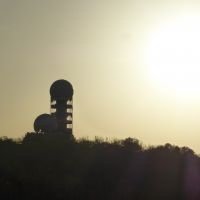-
Posts
578 -
Joined
-
Last visited
Posts posted by Joerg Polzfusz
-
-
Here’s an adapter that will let you use certain filters made by the company LIFA in a lens with 49.5mm thread:
https://www.ebay.de/itm/401785413185
But I fear that it‘ll not help you.
-
-
For a flare like that, you might try some old, uncoated wide-angle- or tele-converter.
Something like this:
https://www.ebay.com/itm/144839576983
(But these might be too good/too new…)
-
Hi!
When you don’t count some special cartridges for some very unique cameras, then there have been three different types of Super8-cartridges:
15m silent
15m sound
60m sound
Now, the only cartridge left is:
15m silent
The cartridge needed by your camera for single frame shooting is:
15m silent
So, there is nothing to worry about anymore (when buying fresh cartridges). These days, you’ll only have to decide between negative and reversal and then colour or b&w.
-
 1
1
-
-
And another filter for flares:
https://www.ebay.com/itm/295518681031
Link to the manufacturer‘s website:
https://prismlensfx.com/collections/filters/products/streak-filter
-
-
-
Hi!
You might want to take a look at this article:
I hope that the described filters do what you want to achieve.
-
Hi!
I am soooo glad that I am not a professional cinematographer: According to some webpages, a „cinematographic statement“ is something like a CV of your work as a cinematographer. But according to other pages, you’ll have to write down your plans for the upcoming project (e.g. something like this: https://indfilmchamplainkelseysmith.wordpress.com/2013/10/01/cinematography-statement-mister-mister/ or this: https://indfilmchamplainkelseysmith.wordpress.com/2013/10/01/cinematography-statement-hold/ ).
-
Could this be lens fungus? Or some damaged coating?
-
Here’s an overview of some AI tools that can already turn text into video without any camera:
-
Hi!
After being to a conference with AI as one of the topics, I played around with Dall-E 2 (attached: „fluffy robot in front of a spaceship“ according to Dall-E 2). So: How long will it take until an AI generates a complete 90min video on its own - 10 years or 20 years?
The fact is that there are already AI generated „photos“ used in commercials (e.g. by NorthFace, Nike…) and as „product images“ on some boxes (e.g. on the packaging of Kaufland‘s own brand). And there are „online shops“ (e.g. billiger.de) where an AI automatically mixes the manufacturer‘s descriptions with the user comments and ratings into the article’s description as shown on the webpage, reducing the marketing department’s work in this area by 80%.
However, so far, no AI is „creative“. E.g. all that Dall-E 2 does is „recycling“ existing images/photos, replacing single objects and maybe changing the style. So, if it would only be trained with images of candles, then it couldn’t invent an image of a light bulb. It also cannot invent a new drawing style on its own. In other words: When you are only doing dull/boring/repeating work, then you might be replaced by an AI within the next 20 years. But when you have to be really creative, then you’ll be save (of course only for some more years ?). However, you’ll be supported by AI soon. In fact, you already are - just think of the already existing auto-focus-cameras that detect humans in the image and that are automatically using these humans as reference points for the focus and then will follow these humans with the focus. Or think of all those digital still cameras that will automatically only take group images when everyone is smiling.
-
If this had been a cheap US-TV crime series, then the police would soon find out that one of the security guards is cooperating with the bandits. ?
-
Hello!
Ever since the existence of the first slide films, there have been debates whether to shoot at box speed or not. For today’s E100D, there seem to be many photographers that are shooting it as 80ASA (at least according to the postings on various forums)…
…nevertheless, there are some factors that have to be kept in mind:
a) processing: age/usage of the chemicals, temperatures and durations also do have an impact on the „brightness“ of the image
b) when was the last time, your camera‘s exposure meter got CLA‘ed? The Elmo Super 110 mentioned by Shane is approximately 50 years old. Did anyone ever did a CLA since it left the factory half a century ago?
c) exposure meters is S8-cameras: Is your camera taking the whole image into account? Or is the meter a single, „center-weighted“ sensor? Or does your camera have 9, 15 or more separate points for measuring the exposure that can be switched on/off?
d) personal taste: what might be „too dark“ for Shane might be already be „too bright“ for me (depending on the scene/subject).
e) last, but not least: Super8 standards vs. existing cameras: There are several cameras that would shoot the E100D as 160 ASA Tungsten - simply because the manufacturer of the camera wanted to save some pennies and hence didn’t include a sensor for detecting the tungsten/daylight notch. And then, there are a few cameras that mistake the E100D with an E160G…
…to sum it up: Shane is correct when mentioning that the box speed is just a recommendation. And there are technical and artistic reasons to ignore it sometimes. But IMHO it’s best to do some (expensive ? ) tests with your camera (while keeping the processing consistent) before applying some settings - especially when it’s the same setting for all your different cameras.
-
The funny thing is: When using electricity generated by wind/water/solar power, then Tungsten/incandescent lights are more friendly to the environment! (That’s because you don’t have to throw away the old devices and new LED lights don’t have to be produced.)
-
Hello Eric,
maybe I’m wrong, but there shouldn’t be any difference between the filters from different companies. E.g. a „green filter for b&w“ from Arri should have the same impact as one from Meopta/Tiffen/Lomo/Kodak/Hoya/Zeiss/Schneider-Kreuznach/whatever. And when the filter is older than 20years, then I doubt that the original curves are still 100% valid due to some aging effects.
IMHO, there are only a few aspects that differ between the brands or models:
* Light loss (older/cheaper filters might cause more loss and hence have a different „filter factor“)
* Thickness (older/cheaper filters might have a thicker optical element and a thicker mount and hence might differ in terms of vignetting)
* Coating (newer filters might have a anti-reflection coating and might be protected better against scratches)
* Optical elements (whether it’s glass, plastic or gelatin should not matter in terms of optical impact, but in price, quality, weight and reaction to heat)
* Price (higher prices usually equals to better quality and better quality control)
* Filter mounts (plastic vs. metal, precision of the threading)
But of course, that’s just my opinion.
BTW: When your „Agfa“ list got printed in the GDR, then it’s very, very likely in fact an „ORWO“ list: After the second WW, the Soviet troops confiscated the Agfa plant in Wolfen (near Bitterfeld), turning it into a separate company. In the beginning, the „capitalistic“ Agfa in the FRG cooperated with the „communistic“ Agfa in the GDR. And both companies continued to sell their products under the same brand name. But later, the „communistic“ Agfa in the GDR was forced to rename itself to „ORiginal WOlfen“ (ORWO). So be careful when applying your list to „Agfa“-branded filters. ?
-
Filters for their 35mm cameras are mentioned here:
-
Hi Eric!
There‘s a list on page 7 of this PDF: https://issuu.com/filmmaker8.com/docs/arriflex-16-catalog-1961
Another list can be found in this price list: https://archive.org/details/TNM_Arriflex_16mm_cameras_price_list_1965_-_Braun_20171019_0073/page/n9/mode/2up?view=theater
and on the last page of this price list: https://ia904602.us.archive.org/17/items/arriflex_paperwork_scans/arriflex_16_price_list_19610401_text.pdf
I hope that this helps.Jörg
-
 1
1
-
-
Hi!
I guess that most questions are already answered by Kodak’s datasheets (e.g. https://www.kodak.com/content/products-brochures/Film/VISION3_5219_7219_Technical-data.pdf ) and publications (e.g. https://www.kodak.com/en/motion/page/essential-reference-guide-for-filmmakers ).
When putting something back into fridge/freezer be sure to keep out any moisture, e.g. by adding silica gel bags.
I hope that this helps!
Jörg
-
 1
1
-
-
Did someone perform additional tests (e6-cross-processing, ecn2 vs. C41, …)?
-
Did someone perform additional tests (e6-cross-processing, ecn2 vs. C41, …)?
-
Yes, filming focus charts was very common, especially when using cameras with C-mount lenses. It served for both testing the camera‘s lenses and later as an aid for setting up the projector.
-
Hi!
I seriously doubt that there’s such a thing like this. All the test films that I have ever heard of have been sold as prints (=on print film and not on reversal film stocks like Kodachrome). Even when some amateurs filmed such a chart (e.g. as part of their clapperboard), then the result will be unusable (unknown filtering, unknown light source/„temperature“, unknown camera that might have caused over- or underexposure, …).
-
https://www.worldofreel.com/blog/2023/1/pr1j3g3002yrttlta9y0z7tp5u4q10
What do you think of the nominees? Did they deserve it? Or is it a matter of taste?






Schneider Cinegon/Cine-Xenon Front Filter Threads
in Lenses & Lens Accessories
Posted
Why don’t you use a filter clamp designed for anamorphics (most anamorphics are lacking a filter thread - so you have to add one by using such a clamp)?
E.g.:
https://www.vid-atlantic.com/products/anamorphic-lens-clamp
https://www.anamorphicstore.com/buy/anamorphic-lens-front-filter-clamp/#